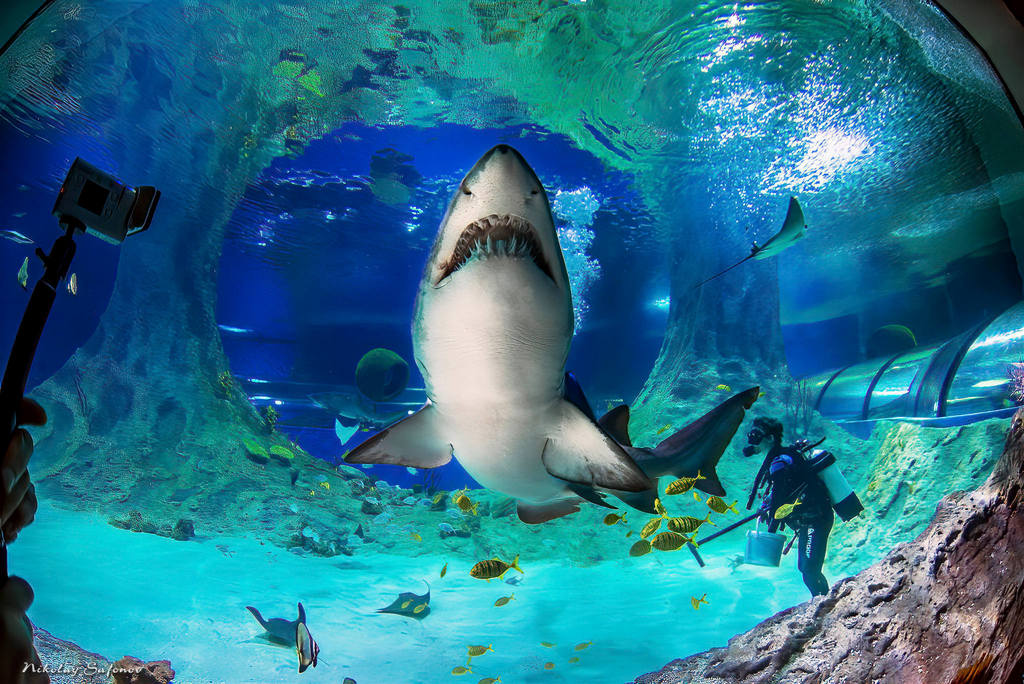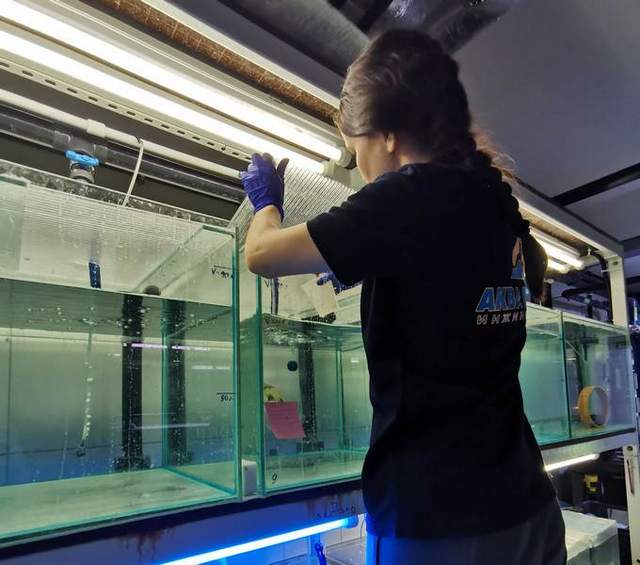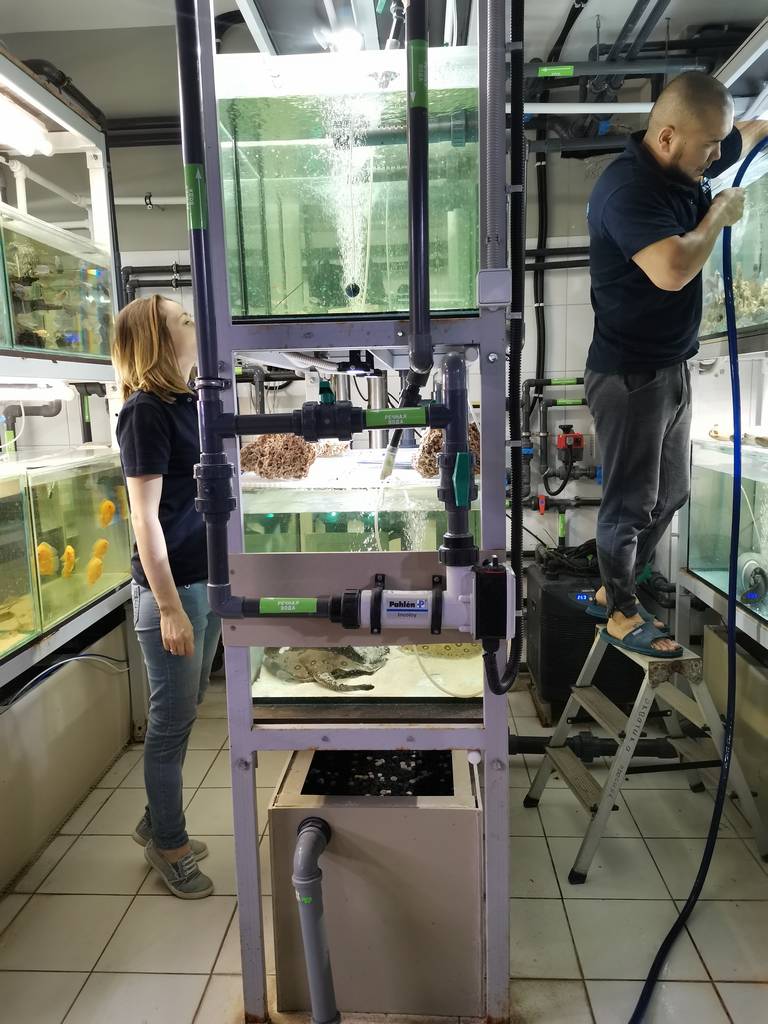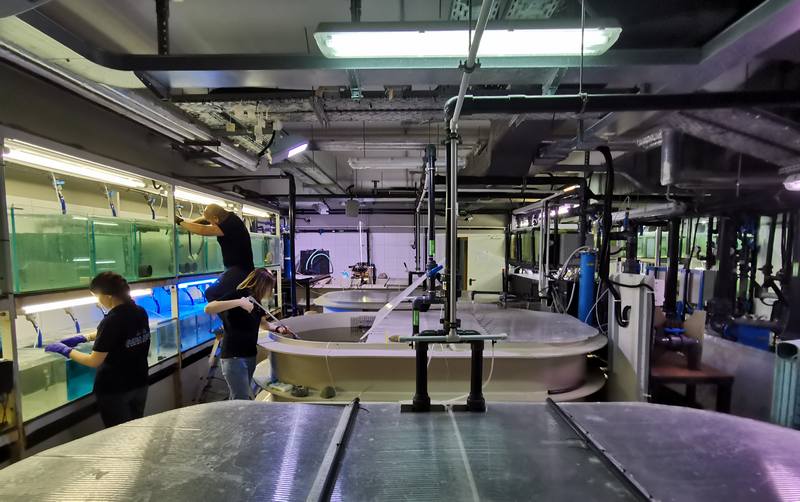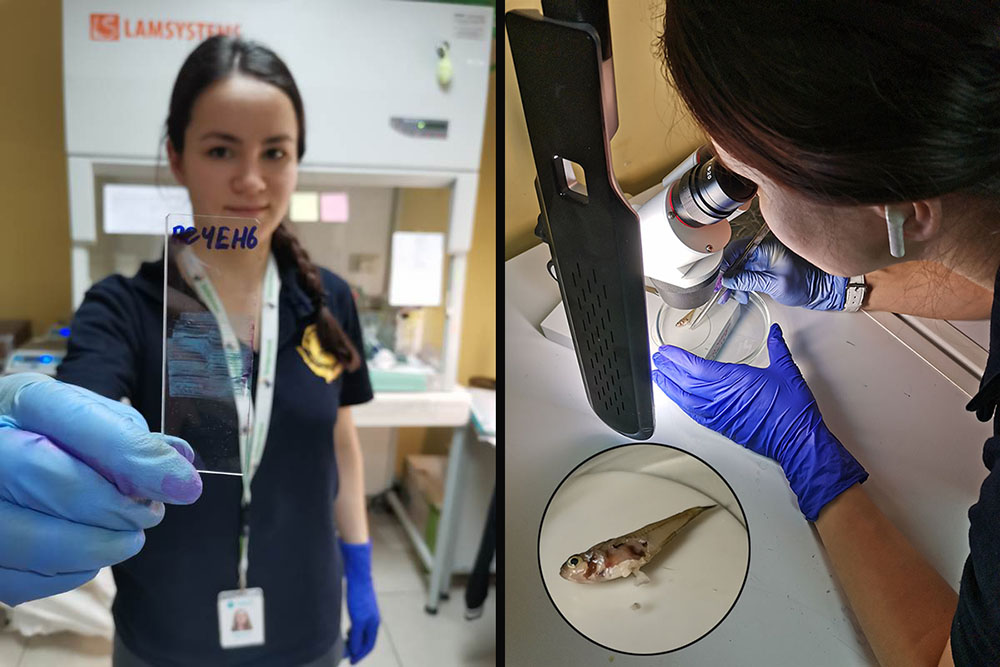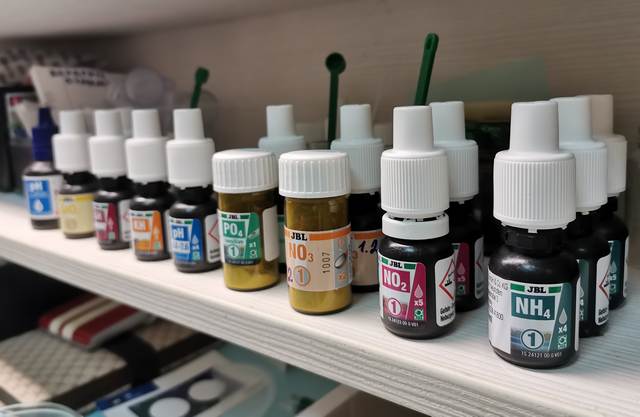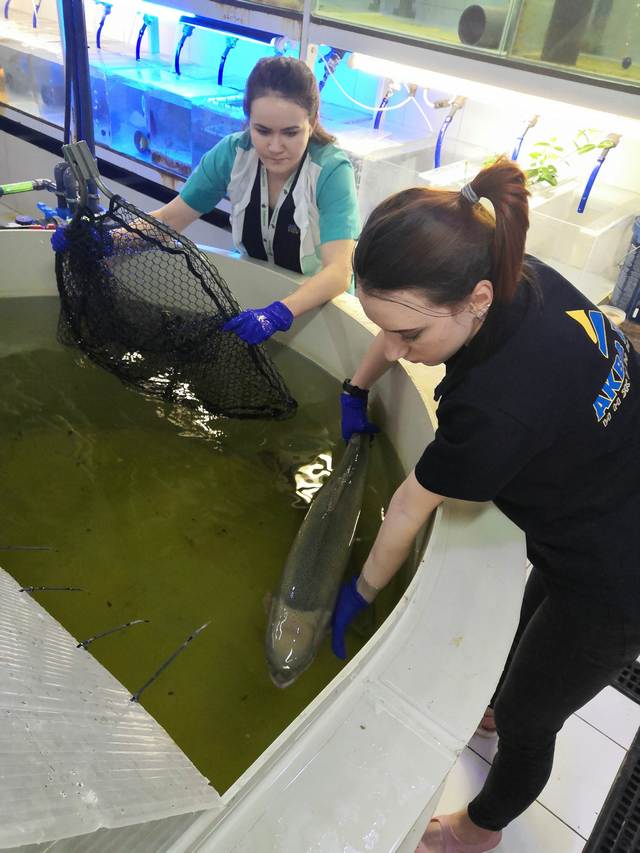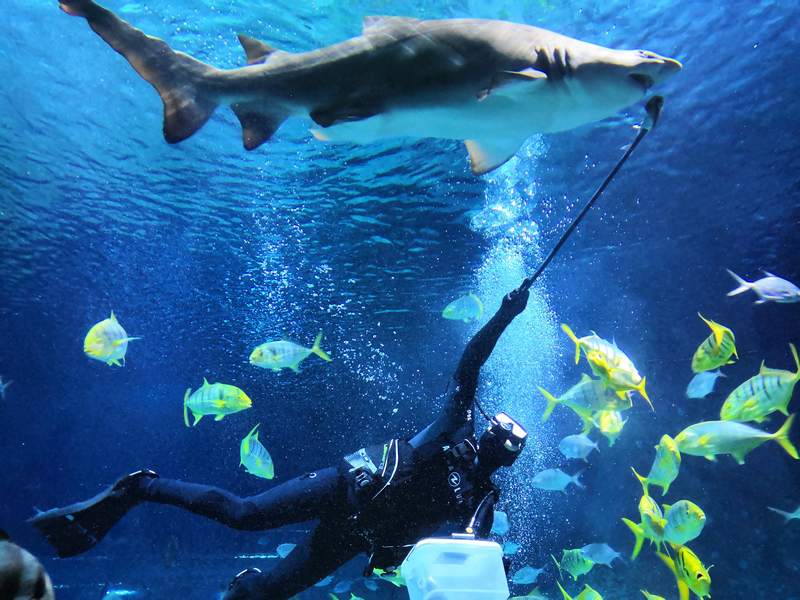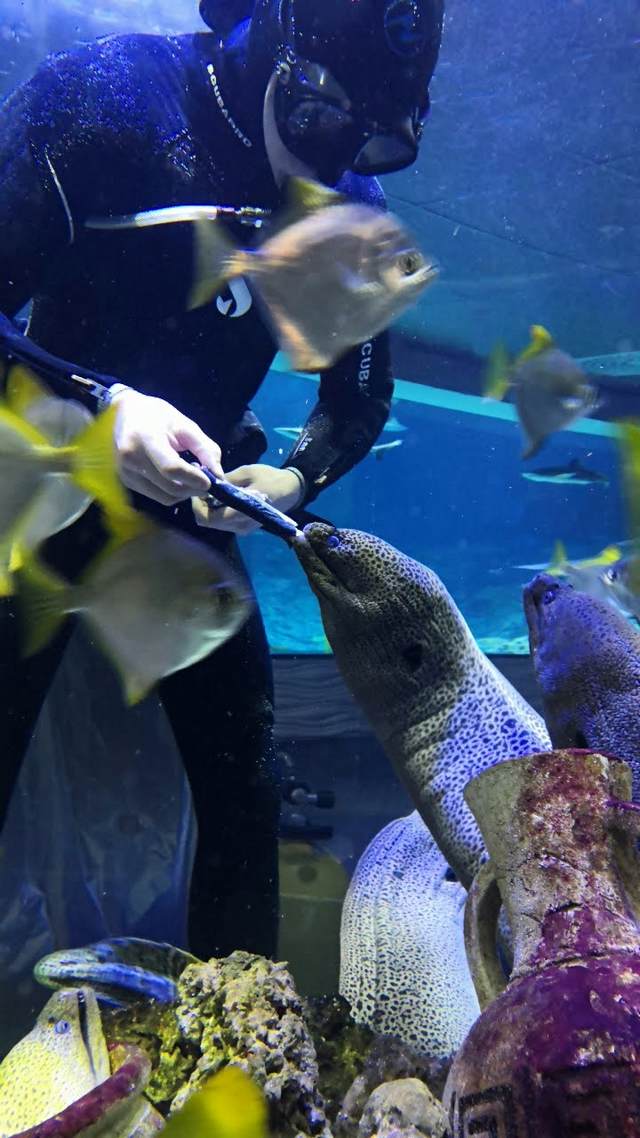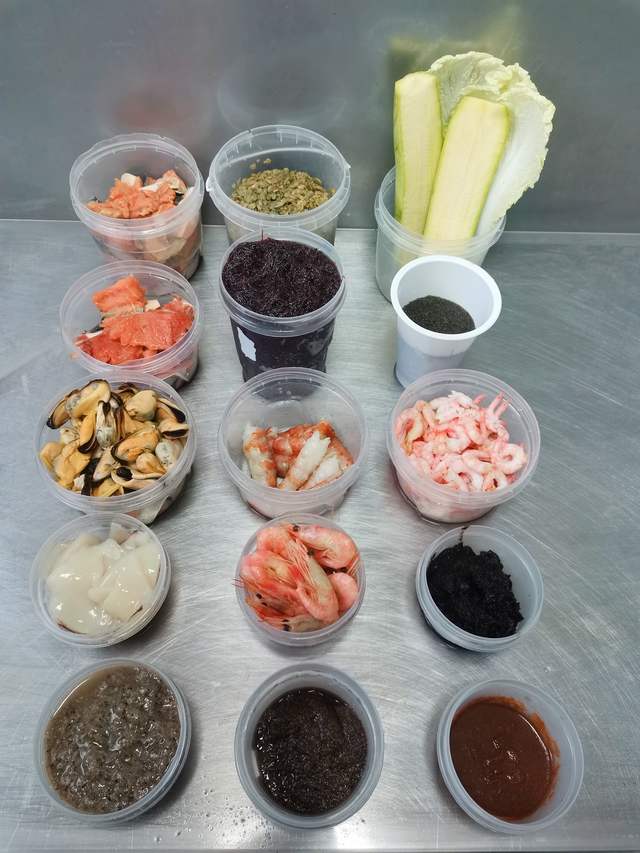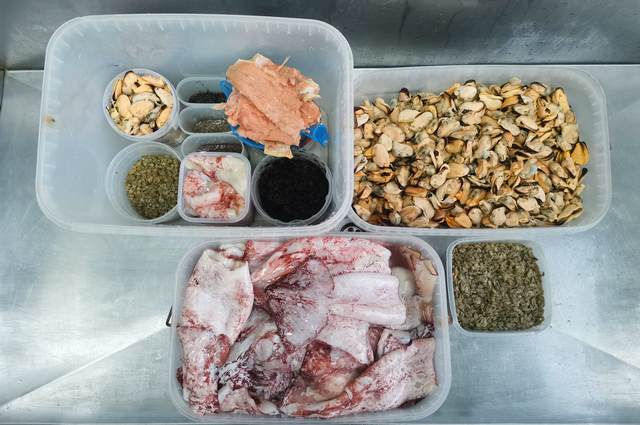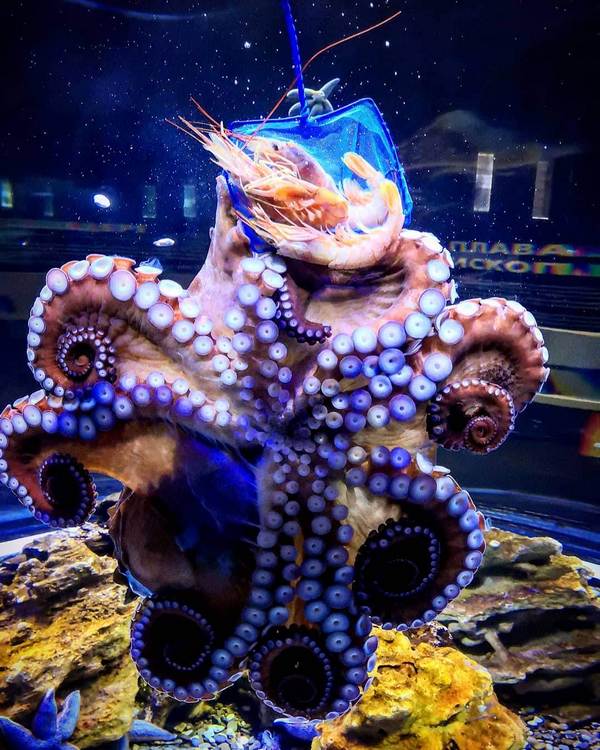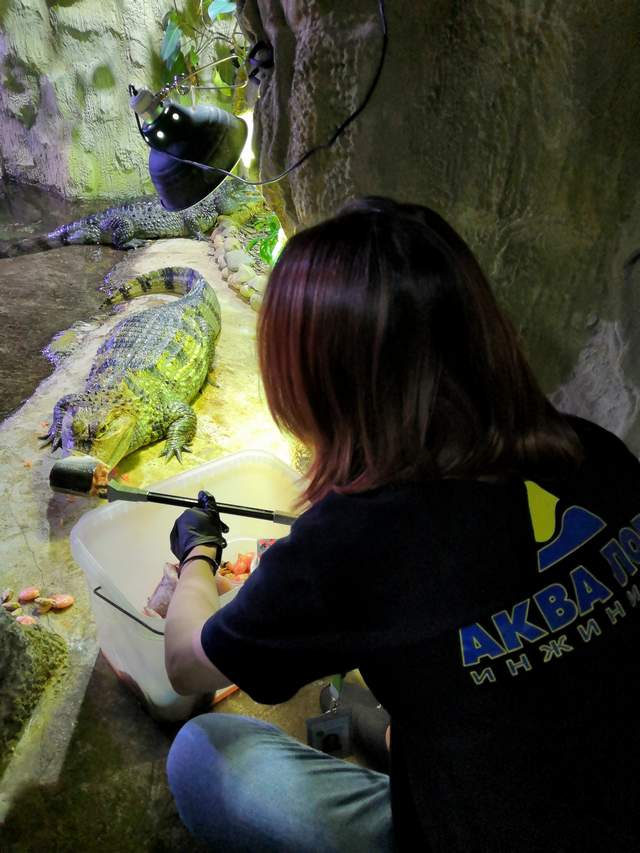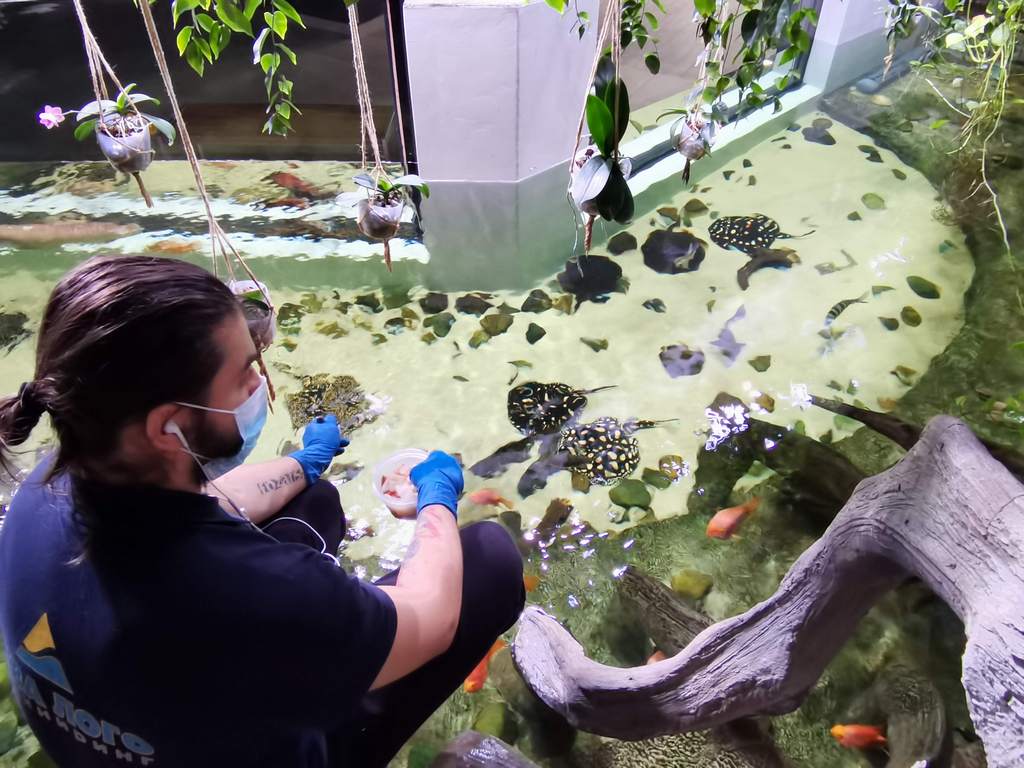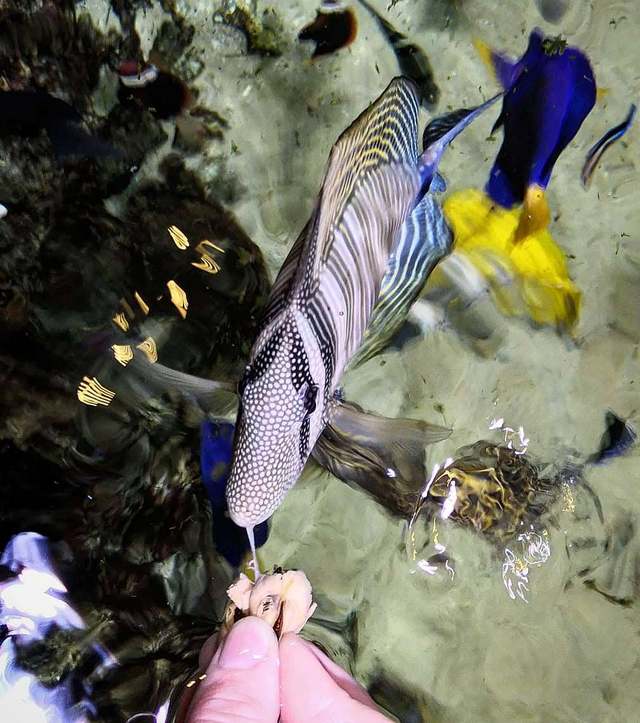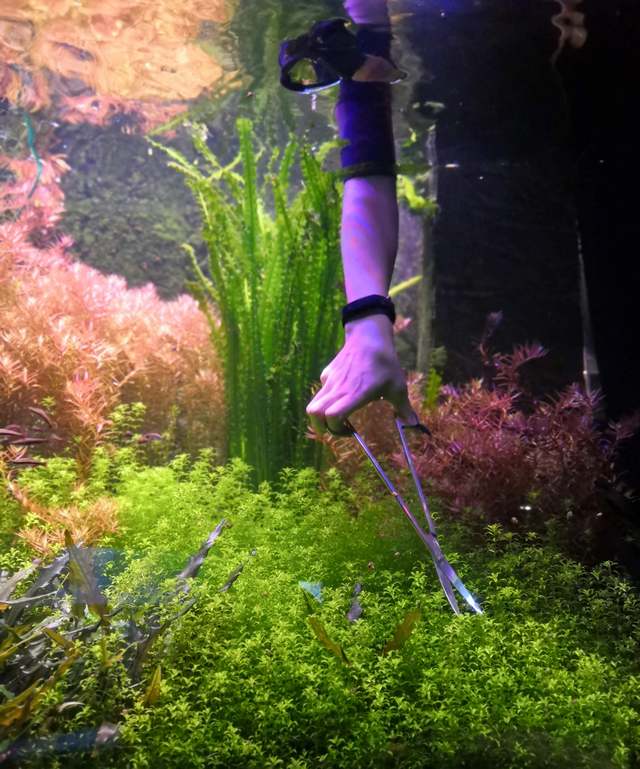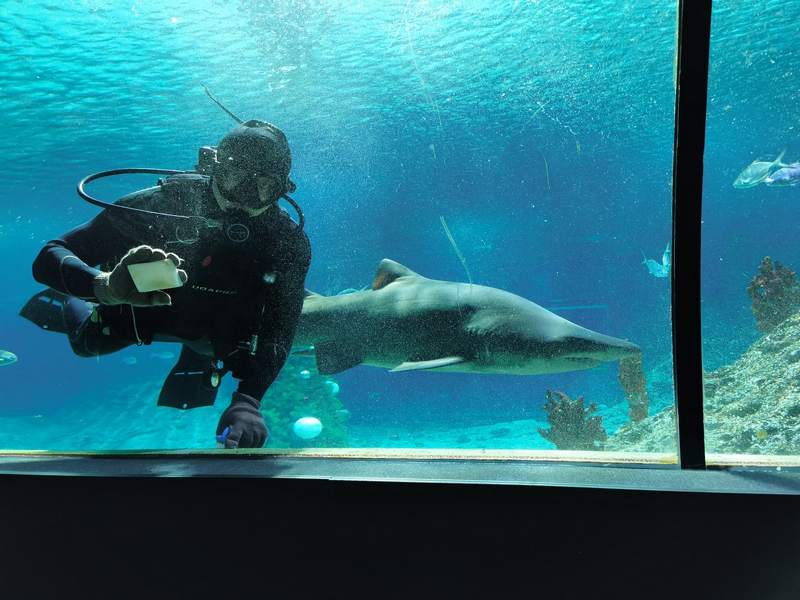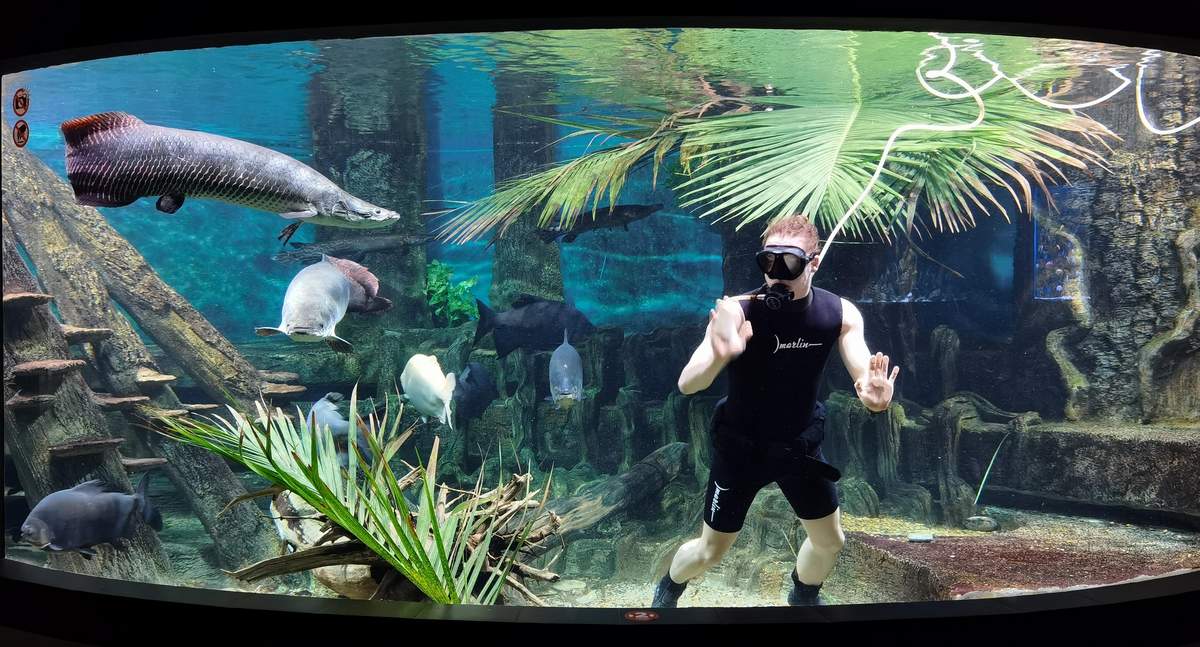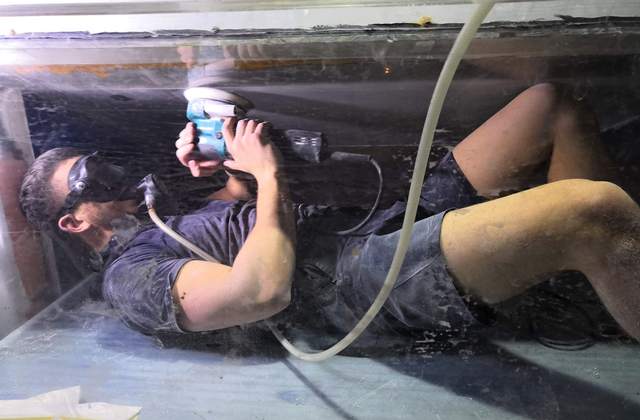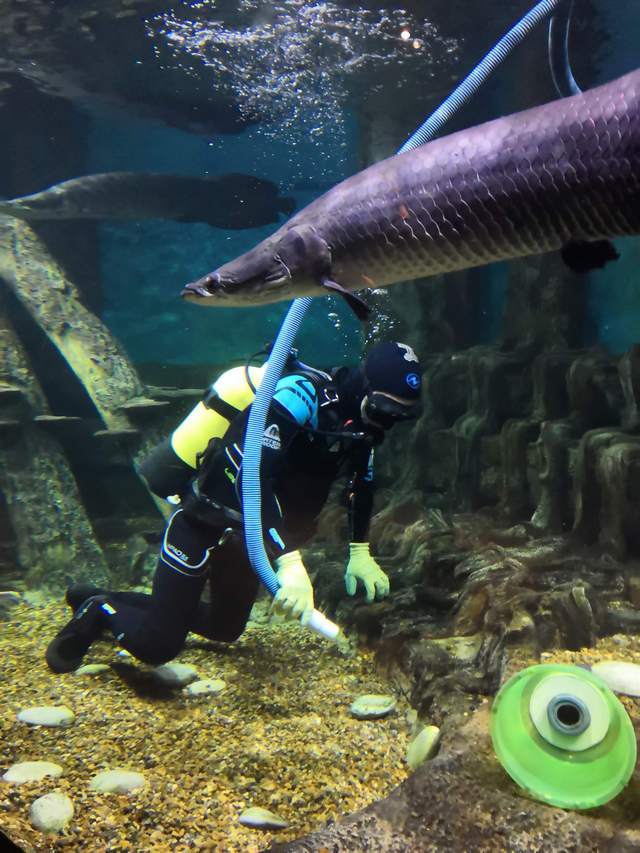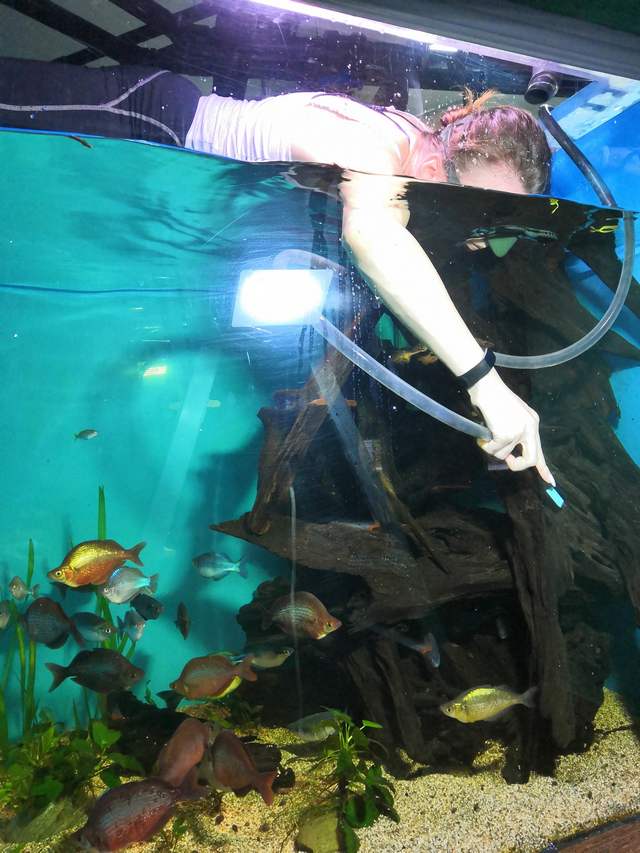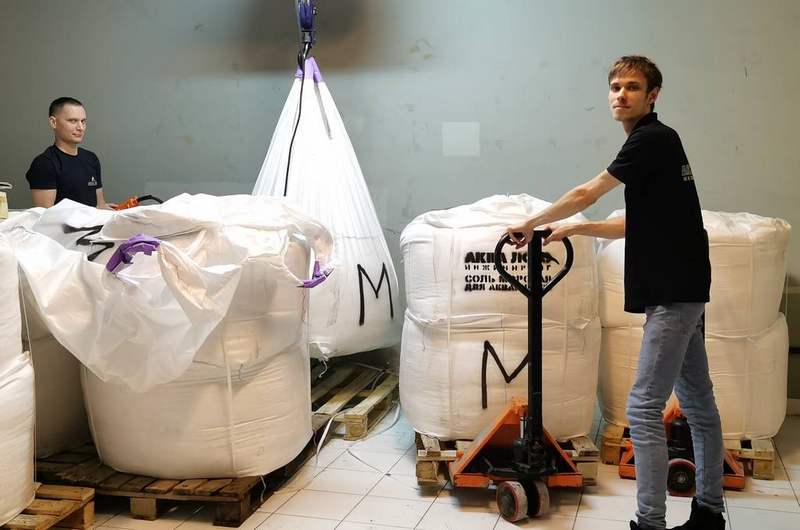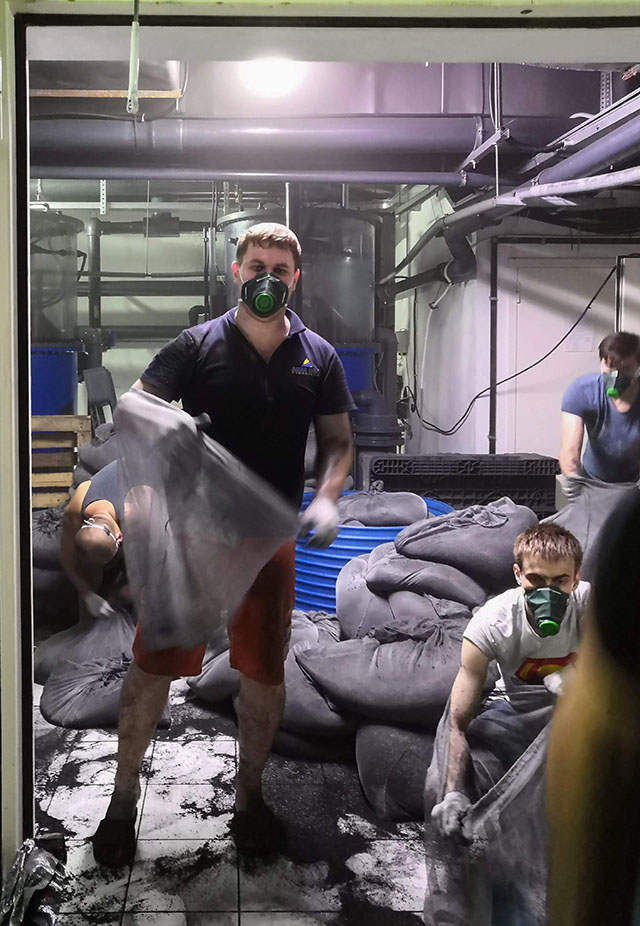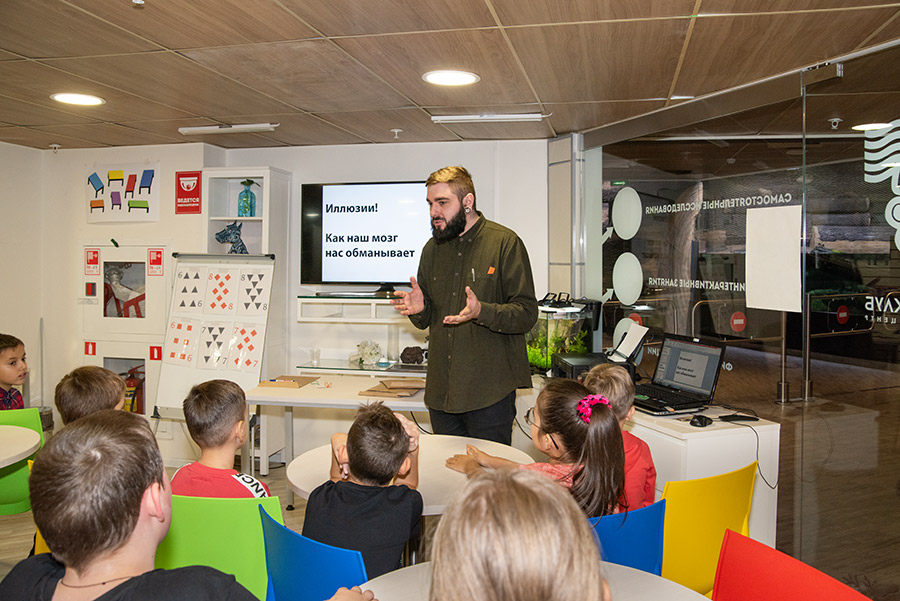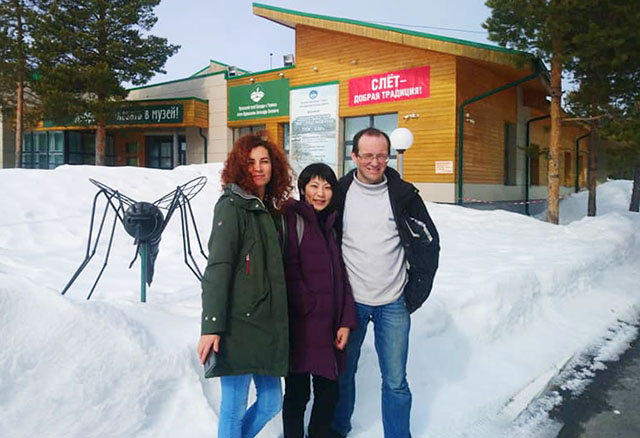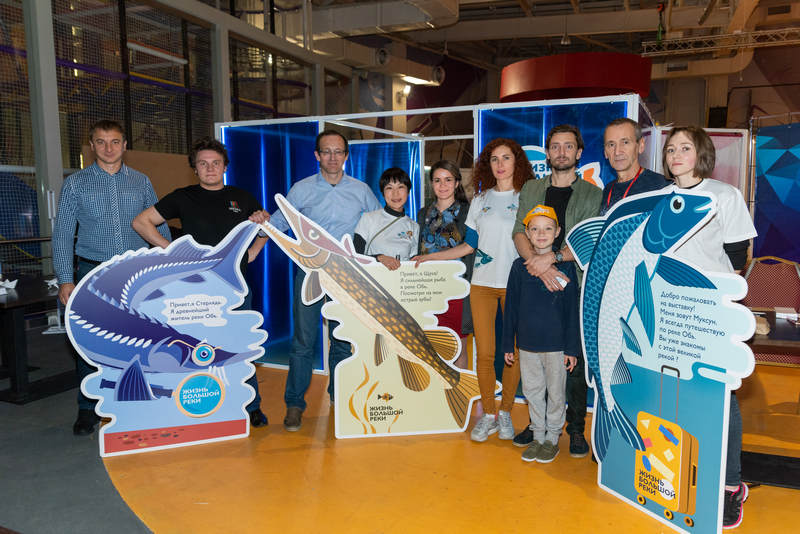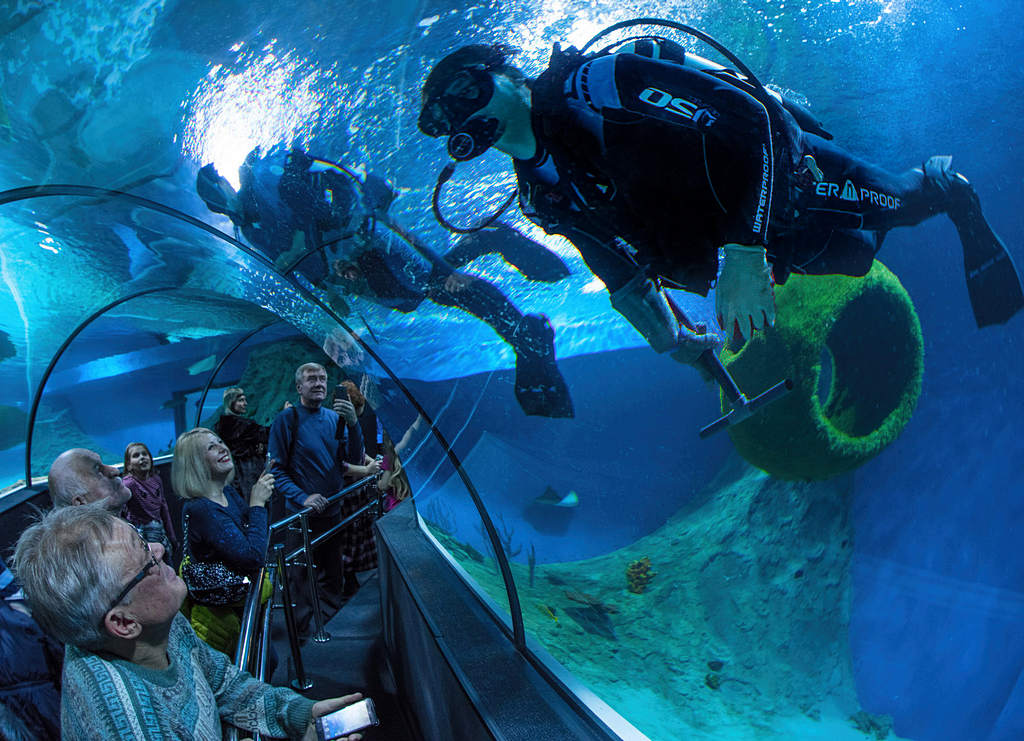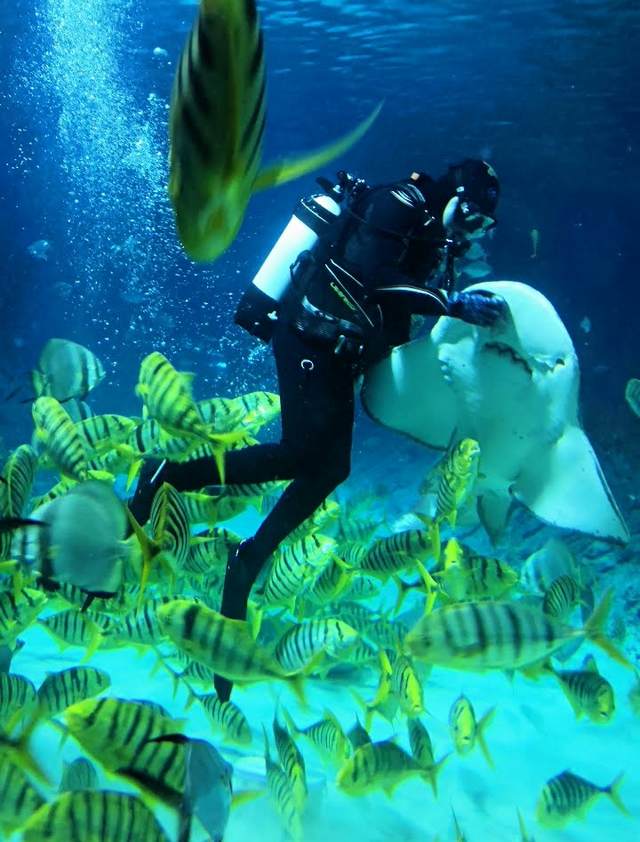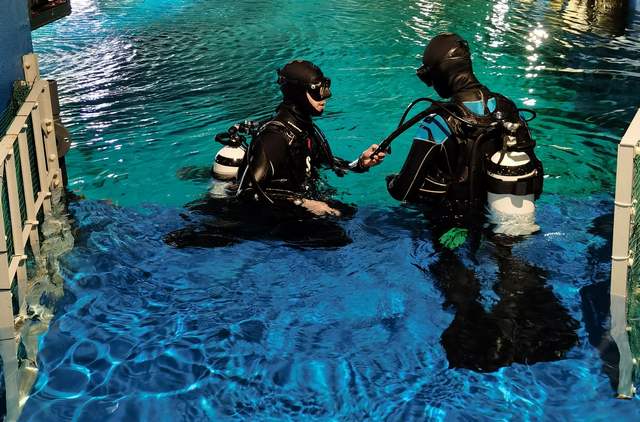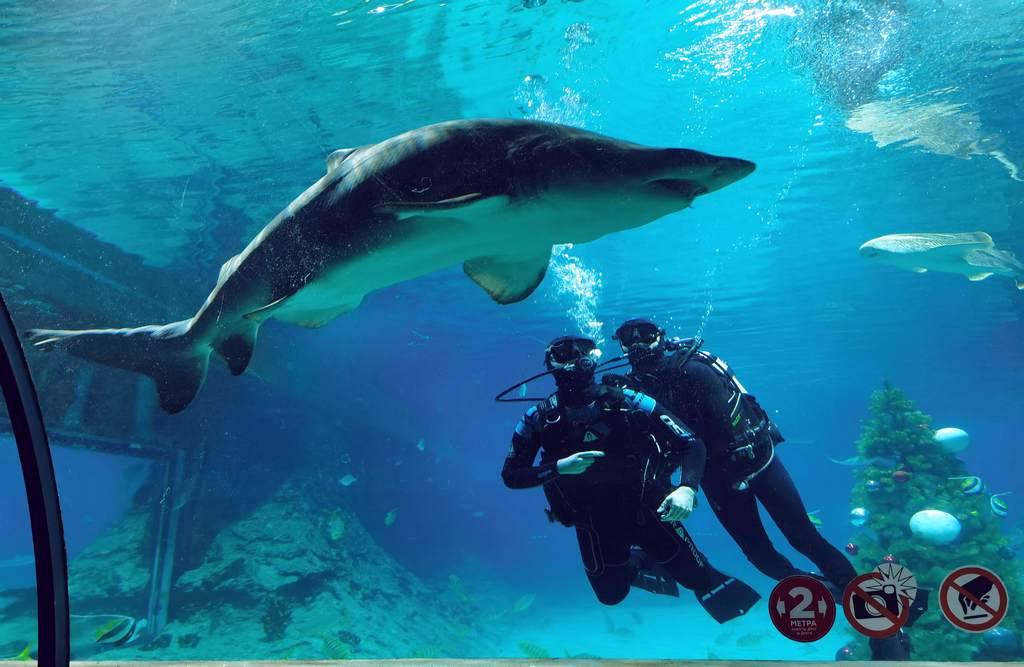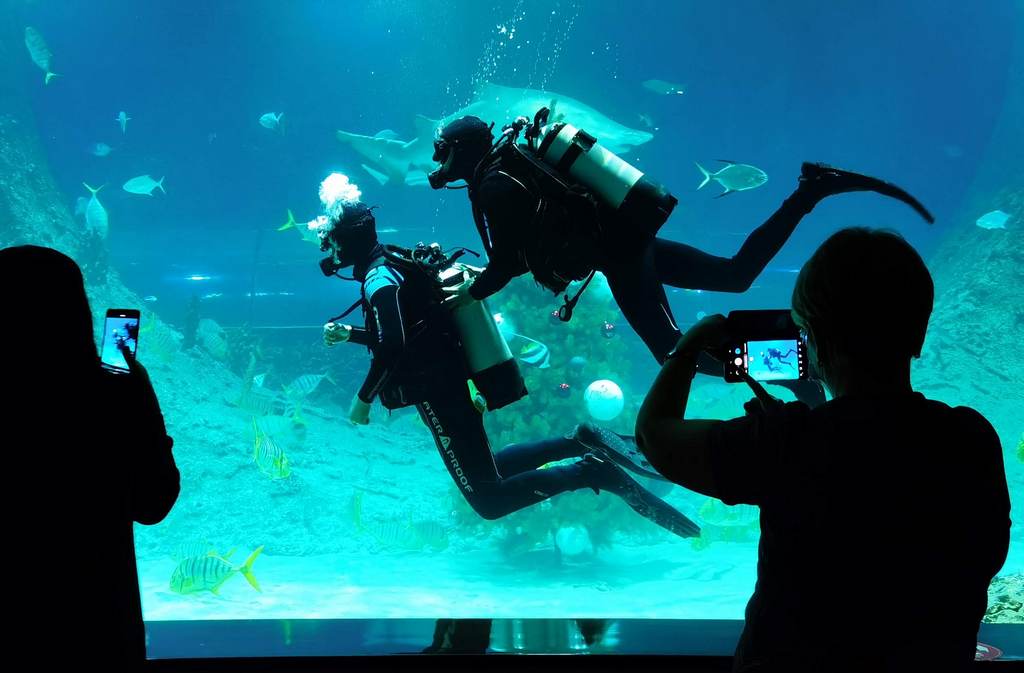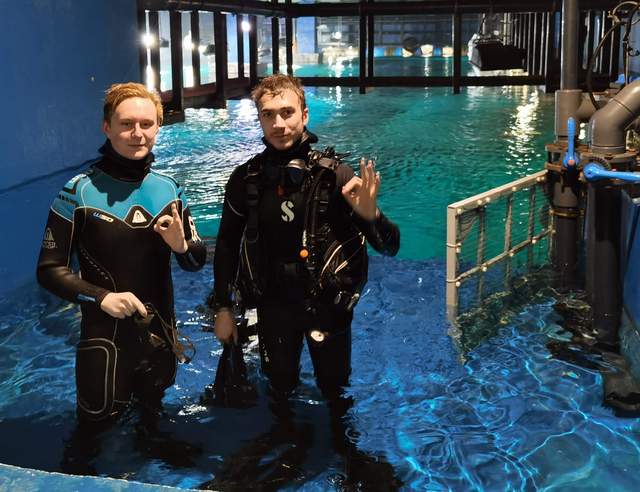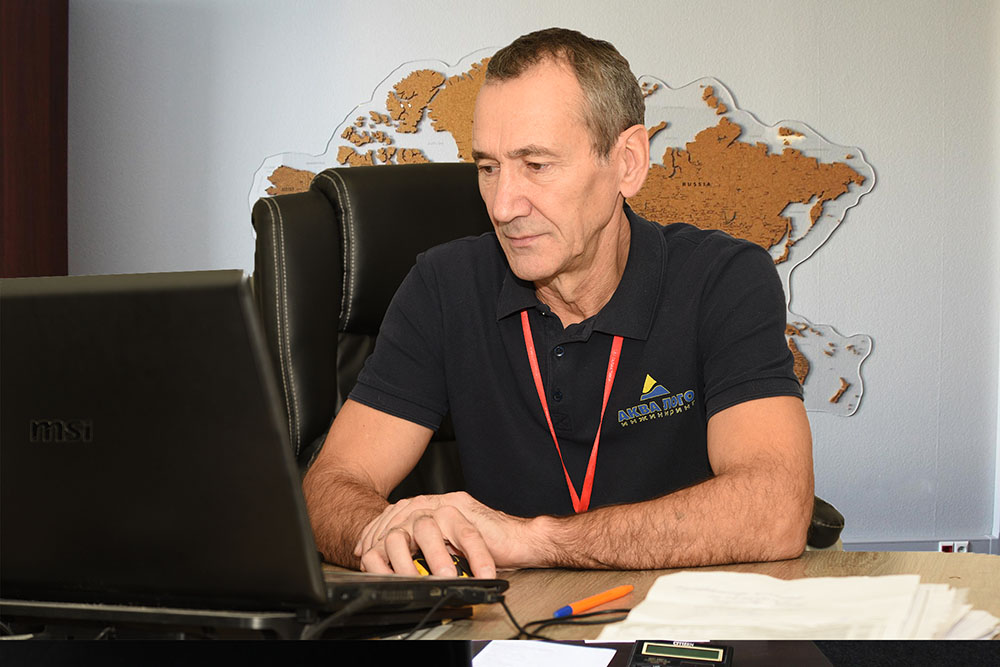Tel.: +7(495) 935-81-86 | Е-mail: ale@aqualogo.ru
Maintenance of the Aquatica oceanarium in Kogalym
The company Aqua Logo Engineering, commissioned by Lukoil PJSC, built and has been maintaining the Aquatica oceanarium in Kogalym since its opening in 2016. The first oceanarium in the Urals Federal District was created as part of the Galaktika Sports and Cultural Complex and became the fourth in the list of those built by our company in five years.
The Siberian oceanarium Aquatica is located far from the tropical seas
The responsible work of Aquatica's operation has been entrusted to our company since the opening of the oceanarium and continues uninterruptedly. The operation team includes aquarists, engineering, ichthyopathological and diving services, excursion and educational department (until the end of 2020).
Thousands of Aquatica's marine and freshwater inhabitants require 24/7/365 continuous care. The tasks of Oceanarium operation include: supplying animals, ensuring the health and nutrition of aquarium inhabitants, monitoring life support systems (LSS), maintaining the necessary habitat parameters and cleanliness in each aquarium, cleaning all aquarium surfaces from contamination, ensuring the transparency of aquarium windows.
In the success of the oceanarium, its popularity, the important components of the work are educational and outreach. Conducting excursions and informative classes with children, introducing those wishing to diving classes - all this is also carried out by employees of Aqua Logo Engineering.
Supply of aquarium inhabitants
Delivery of inhabitants to any oceanarium under construction begins several months before its official opening. We import most of the animals for Aquatica from Singapore, Turkey, Indonesia, Malaysia, China, Sri Lanka, Brazil and Japan.
Geography of transportation of oceanarium inhabitants
Animals brought from abroad underwent a 30-day quarantine at the Akva Logo Quarantine and Aquarium Complex in Salarevo, Moscow. We have a state veterinarian who, at the end of quarantine, issues each batch with a certificate according to Form No. 1 for transportation to other regions of the Russian Federation.
The Oceanarium collection of animals is constantly replenished with interesting and rare species. They are brought in by air and by land from different parts of the world - from southern to northern latitudes. The largest inhabitants of the Aquatica - sand tiger sharks and shark-tailed rays - were delivered by a specially equipped vehicle designed for transporting such fish over long distances.
Some fishes of the local Siberian fauna (not included in the Red Book) were purchased by us at the aquaculture enterprises of the Khanty-Mansi Autonomous Okrug or caught from the nature. To form an exposition of cold-water representatives of native ichthyofauna, we organized an expedition to one of the rivers of the Kuznetsk Alatau and conducted licensed catching of taimen and grayling.
Fish health at the oceanarium
Did you know that a sand tiger shark with delivery to an oceanarium can cost as much as a nice apartment? And it's not the most expensive among the thousands of fish on display, although it is the largest. Now can you imagine what responsibility lies on the oceanarium service?
Sand tiger shark in the main marine aquarium of Aquatica
The health of the oceanarium's inhabitants is a priority. The condition of the animals is monitored by an ichthyopathologist, aquarists, divers and anyone who first notices anything suspicious in the pets' behavior.
Control of the condition of fish in quarantine
Fish with abnormalities are transferred from exposition tanks to quarantine tanks for treatment. Aquatica provides freshwater and marine quarantines separately for warm-water and cold-water species with their own life-support systems. Quarantine tanks contain not only sick fish, but also fish that arrived from far away after transportation. Here they are helped to adapt to new conditions, relieve stress, begin to eat.
Racks with quarantine tanks
The quarantine has many small aquariums and several pools for large fish
Large fish after adaptation and laboratory tests of health are released into the exposition, the small ones are raised to the right condition. Under optimal quarantine conditions, the young grow quickly and in a month or two are ready for transplantation to the exhibition tanks. This way you can save money on replenishing the collection. After all, the smaller a fish is, the cheaper it is to transport it sometimes thousands of kilometers.
The fish doctor - ichthyopathologist is responsible for fish's welfare in the aquarium. His/her duties include pathological and parasitological examinations, curative and preventive treatment of fish, and control of water composition and temperature in the aquariums. Dead fish must be dissected to determine the cause. Based on the diagnosis, treatment of the dead fish's neighbors is prescribed.
Ichthyopathologist Yana Zaripova
Hydrochemical tests for water analysis in the oceanarium lab
Both medicinal and surgical methods are used to treat the inhabitants of the aquarium. Sometimes physical force has to be used as well.
Crocodile vaccination
Ichthyologist Ekaterina Boldysheva and ichthyopathologist Yana Zaripova perform treatment procedures
Feeding hydrobionts
The most important element in the care of any animal is timely, sufficient and balanced feeding. This is especially important in large aquariums, where large predators such as sharks and smaller fish - potential victims. When sharks and other large fish are fed, the safety of the remaining inhabitants can not be worried about.
At the main marine aquarium, sand tiger sharks are the first to be fed
Territorial morays are fed personally
The diet used is varied - shrimp, thawed fish, squid, shellfish, plant food.
The food table of the inhabitants of small freshwater aquariums. The only thing missing in the photo is the combicum
Diet of marine aquarium inhabitants not on the busiest feeding day
Paku love vegetables
Feeding the octopus
Reptiles prefer quality animal protein
Feeding fish from the shore
The sailing zebrasome is used to this kind of feeding and is not afraid of
Plant care
More than 20 species of aquatic and above-water plants are on display at the Aquatica oceanarium. Their care includes planting, transplanting, pruning, replacing, protection from pests and diseases, feeding, light control.
Micranthemum Micranthemoides planted by Ekaterina Boldysheva
Mowing plants
Cleaning aquariums
All visible surfaces of the decoration, the bottom and walls of the aquariums periodically need to be cleaned of sediment and algae fouling. There are a lot of aquariums, they constantly have to be cleaned.
Cleaning the main marine aquarium
Precipitation forms faster on the tunnel walls
It is especially important to maintain the transparency of the acrylic walls of aquariums, so that visitors can see the beauty of the underwater world, not dirty glass.
Sometimes it is more convenient to work with an air supply hose
Polishing the acrylic glazing of an aquarium in cramped conditions. You can only breathe with a compressor.
Underwater vacuum cleaner
A spotlight is reflected in the glass of the aquarium, which helps you better see what is not yet cleaned
A considerable amount of work in cleaning the aquariums is done by divers, especially in the main saltwater aquarium. However, all aquarists know how to work in light diving equipment and often use it in their work.
Water treatment
Water is as vital for hydrobionts as the atmosphere is for land dwellers. Its physical and chemical properties in aquariums must correspond to the living conditions of species in their natural environment - in polar and tropical, marine and fresh waters. It is the job of the service team to monitor and correct all key characteristics of the water quality. Especially in marine aquariums.
Main marine aquarium from above (technical area)
Aquatica's huge main marine aquarium holds 3.5 million liters of water. It has to be of oceanic salinity - 35 ‰. To prepare artificial seawater, you must first desalinate ordinary tap water and then add a special sea salt to it in the right proportion. The water in the sea tanks needs to be renewed periodically, so the aquarium buys tons of sea salt.
В таких огромных мешках поставляется морская соль
Operation of life support systems
Life support systems for oceanarium inhabitants are complex engineering structures, functionally similar to those used in submarines and space stations. They have to work constantly and without failures. Therefore, pumps, filters and some other elements of the LSS are duplicated. Life support systems maintenance includes cleaning, routine repairs caused by normal wear and tear of materials and equipment; supply and replacement of consumables; equipment adjustment and tuning.
Water from the aquariums flows continuously into the filter system and comes back purified
Only specialists with an engineering degree are able to service such equipment
The majority of the aquariums have their own LSS, differing in purpose and performance. The oceanarium exhibits animals from cold, temperate and tropical marine and fresh water bodies. Without modern means of automation and dispatching, the maintenance of dozens of aquariums would require a lot more personnel. The uninterrupted operation of the oceanarium is the merit of professionals who are in love with their work.
Water treatment systems in the quarantine room
One of the most physically demanding operations in oceanarium maintenance is replacing the carbon adsorbent. Periodically, 3,500 kg of activated carbon must be changed in the seawater filtration systems of the oceanarium. This takes three days of work by several people.
In the cleaning system of the main marine aquarium charcoal change every three months, in other marine and freshwater aquariums - once a month.
Educational and outreach work
Kogalym Oceanarium is not only an entertainment unique for Siberia. Our experience of holding educational programs and master classes in the "Sea Club" of the oceanarium, including with the involvement of our Moscow partners (Museum of the History of Science and Technology), was received with enthusiasm by children and adults.
Master class at the "Sea Club"
However, it is not easy or cheap to organize educational trips for children to Kogalym from afar. That's why we decided to present our educational programs in other cities at mobile exhibitions within the "Interesting Siberia" project. The idea of the project came as a result of acquaintance of Alexey Kazakevich, general director of Akva Logo Engineering, with Yumi Watanabe, biologist from Tokyo and specialist in mobile aquarium exhibitions.
Yumi Watanabe's first visit to Ugra. With Anna Logunovich and Alexey Kazakevich
Together with Yumi our employees under the direction of Anna Logunovich, Head of the Excursion Department of the Aquatica Aquarium, for the first time in Russia prepared and held an interactive exhibition "Life of a big river".
Authors and organizers of the "Interesting Siberia" project
On October 26, 2019 the Russian-Japanese interactive exhibition "Life of the Big River" received the first visitors in Kogalym. For 10 days "Life of the big river" was visited by several hundred residents of Kogalym and its guests. And it was only the beginning of the Russian-Japanese project. In February 2020 the residents of Noyabrsk had an opportunity to visit the interactive exhibition "Big River Life", and in March it moved to Langepas.
Anna Logunovich and Anna Rezvova meet another group of schoolchildren at the entrance to the exhibition
Now, because of the coronavirus pandemic, the "Interesting Siberia" project can't hold its festivals. But on the other hand, the organizers have time to work on new themes and create new events.
Diving Service
Diving work in the oceanarium is carried out strictly according to the rules and regulations. All safety precautions are observed, and only certified specialists with extensive diving experience are allowed to work. Divers work in aquariums can seem routine and uninteresting - after all, it is mainly cleaning the bottom, walls, decorations and glazing of aquariums from sediments and fouling. But we should not forget that on the one hand there are aquatic animals constantly near people in black wetsuits that require attention and care.
Visitors greet divers after a 20-minute demonstration feeding of sharks and other fish
And on the other hand, behind the glasses of the aquariums there are dozens of visitors, who really enjoy it when divers not only do their job, but also communicate with them like entertainers from the stage. The most experienced divers really are when they put on a feeding show for sharks, stingrays, and other oceanarium inhabitants. It is very important for a diver to know and understand the fish he is interacting with in front of the audience. Then the performance is a pleasure for both participants and spectators.
Feeding the sharktail stingray
In Akvatica you can not only look at the divers, but also swim under their control among the sharks!
Those wishing to dive are briefed, equipped in all the diving gear, and together with an instructor make a tour around the perimeter of the main sea aquarium.
Nice meeting :)
Всё под контролем и под прицелом камер
The impressions of Aquatics are unforgettable!
Our team at the main marine aquarium Aquatica Aquarium (Kogalym, November 2016)
Aqua Logo Engineering team at Aquatica (Kogalym, January 2021)
Vladimir Logunovich has been in charge of the operation team since the opening of the Aquatica oceanarium
The specialists of Aqua Logo Engineering are constantly improving their skills, many employees participate in international aquarium conferences, conduct seminars and train people from Russia and other countries.
Working on the creation of five oceanariums and several large aquariums allowed us to form a team of professionals capable of solving the most complex tasks with confidence in a short time. Accumulated experience, its analysis and systematization - is a reliable insurance against possible mistakes at all stages of the creation of the aquarium - from concept to commissioning.
Photo: Anastasia Glyzina, Ekaterina Boldysheva, Nikolay Safonov








